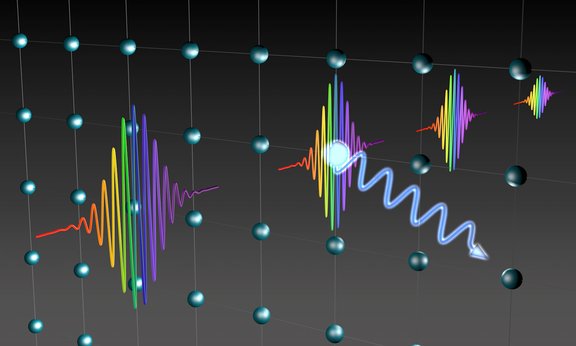The invention of the light microscope marks the beginning of modern science; its application has enabled scientists to answer fundamental scientific questions. Microscopes are still an extremely important tool in research and are standard equipment in many laboratories. Chemistry Nobel laureate Stefan Hell coined the term nanoscopes for describing high-resolution or far-field light microscopes because they also show objects in the nanometer sphere. Together with Ignacio Cirac from the Max-Planck Institute for Quantum Optics in Garching, Oriol Romero-Isart and PhD student Patrick Maurer have now made a discovery that may lead to a completely new scheme for far-field light nanoscopy.
The light’s wavelength poses a limit to the resolution of light microscopes. However, by applying some technical adjustments, scientists are able to circumvent the obstacles and achieve higher resolutions. In a theoretical paper published in the current issue of Physical Review Letters, the physicists in Innsbruck have now demonstrated how a train of attosecond pulses of polychromatic light could be used to excite a two-level system, which is a basic model system in quantum mechanics. After a short period of time the system returns to its ground state thereby emitting a light particle that can be detected. “Since we can focus attosecond lasers really well, our new approach may lead to the development of a new technology for nanoscopes,” says an excited Romero-Isart, whose research group also studies topics in the field of nano-optics.
“The light pulse spectrum could range from radiofrequencies to ultraviolet light,” explains Maurer. “The resolution will be determined by the mean wave length of the light.” The duration of the light pulse has to be extremely short, that is in the attosecond range - an attosecond is a billionth of a billionth of a second. The next step for the scientists is to calculate their approach with real molecules to pave the way for developing novel nanoscopes.

